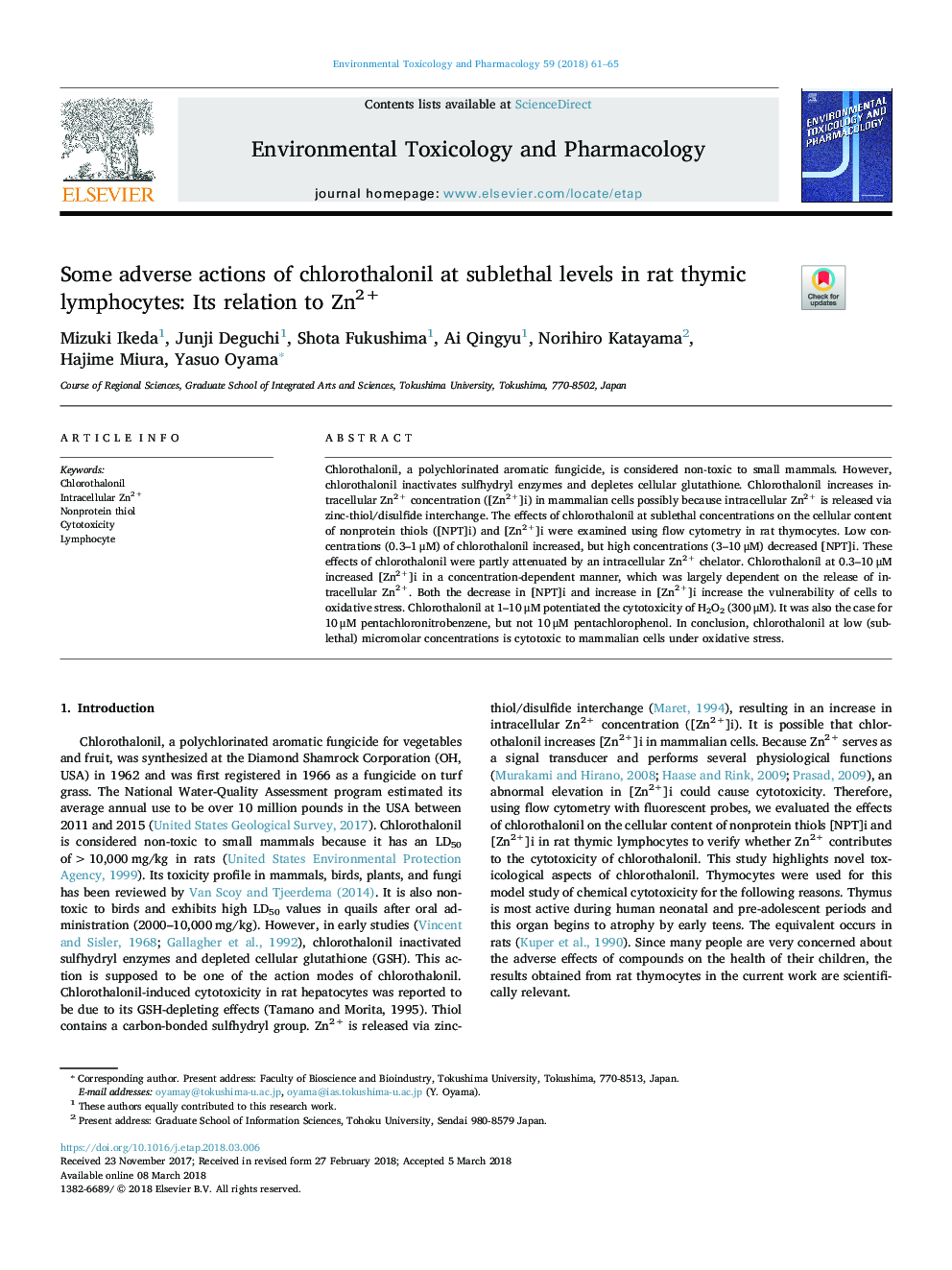| کد مقاله | کد نشریه | سال انتشار | مقاله انگلیسی | نسخه تمام متن |
|---|---|---|---|---|
| 8545883 | 1561685 | 2018 | 5 صفحه PDF | دانلود رایگان |
عنوان انگلیسی مقاله ISI
Some adverse actions of chlorothalonil at sublethal levels in rat thymic lymphocytes: Its relation to Zn2+
دانلود مقاله + سفارش ترجمه
دانلود مقاله ISI انگلیسی
رایگان برای ایرانیان
کلمات کلیدی
موضوعات مرتبط
علوم زیستی و بیوفناوری
علوم محیط زیست
بهداشت، سم شناسی و جهش زایی
پیش نمایش صفحه اول مقاله

چکیده انگلیسی
Chlorothalonil, a polychlorinated aromatic fungicide, is considered non-toxic to small mammals. However, chlorothalonil inactivates sulfhydryl enzymes and depletes cellular glutathione. Chlorothalonil increases intracellular Zn2+ concentration ([Zn2+]i) in mammalian cells possibly because intracellular Zn2+ is released via zinc-thiol/disulfide interchange. The effects of chlorothalonil at sublethal concentrations on the cellular content of nonprotein thiols ([NPT]i) and [Zn2+]i were examined using flow cytometry in rat thymocytes. Low concentrations (0.3-1â¯Î¼M) of chlorothalonil increased, but high concentrations (3-10â¯Î¼M) decreased [NPT]i. These effects of chlorothalonil were partly attenuated by an intracellular Zn2+ chelator. Chlorothalonil at 0.3-10â¯Î¼M increased [Zn2+]i in a concentration-dependent manner, which was largely dependent on the release of intracellular Zn2+. Both the decrease in [NPT]i and increase in [Zn2+]i increase the vulnerability of cells to oxidative stress. Chlorothalonil at 1-10â¯Î¼M potentiated the cytotoxicity of H2O2 (300â¯Î¼M). It was also the case for 10â¯Î¼M pentachloronitrobenzene, but not 10â¯Î¼M pentachlorophenol. In conclusion, chlorothalonil at low (sublethal) micromolar concentrations is cytotoxic to mammalian cells under oxidative stress.
ناشر
Database: Elsevier - ScienceDirect (ساینس دایرکت)
Journal: Environmental Toxicology and Pharmacology - Volume 59, April 2018, Pages 61-65
Journal: Environmental Toxicology and Pharmacology - Volume 59, April 2018, Pages 61-65
نویسندگان
Mizuki Ikeda, Junji Deguchi, Shota Fukushima, Ai Qingyu, Norihiro Katayama, Hajime Miura, Yasuo Oyama,